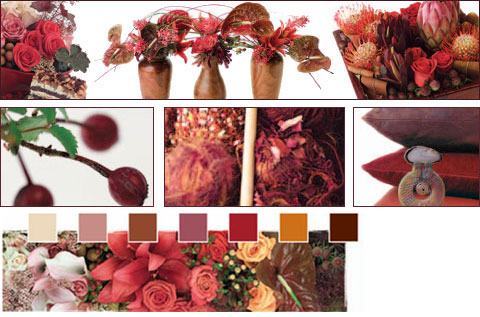Here's the color wheel. Study it. You will need to learn how the color wheel works and how you can apply that knowledge to these assignments. It's easier than you think.

For this assignment you will concentrate on two different theories of color. That of complementary color and that of analogous color.
Let's start with complimentary color. It is the easiest. Here is a chart. If I were you I'd print this out and take it home with you so that you have it to use as a reference.

Click on the image to make it larger and easier to read. Right click on this and save it to your folder and you can print it out later.
Tessie Lammle figured out that if you think of sports teams, i.e. the Denver Broncos, the L.A. Lakers, etc...you will have a very good idea of what complimentary colors are.

Frankly I think if you remember the colors of Christmas you will be well on your way. What are the colors of Christmas? Red and green.

I want you to find OR CREATE a scene which you have two complimentary colors. I want you to take your time and find some good light, make an interesting composition, check and set your white balance (this is getting crucial right?!?!), and most importantly I want you to make a bunch of different exposures. BRACKET! Change your composition with the camera, change your composition of the objects. Get an interesting photograph! I want you to do at least one of these complimentary colors, do two if you are feeling ambitious. If you only do one you'd better work it and make sure that you have good exposures, good focus and good composition. Shoot a LOT of frames on this assignment.
Now let's talk about ANALOGOUS color. What's analogous color? Analogous color is similar to monochromatic color, but it gets to be quite a bit richer. Analogous colors are those colors that are adjacent on the color wheel. Let's look at this diagram:

Click on the image to make it larger and easier to read. Right click on this and save it to your folder and you can print it out later.
Monochromatic color got it's richness by the variations of light striking the object. Darker areas became a slightly different shade of that color, lighter areas where more light hit the object became a lighter shade of that one color.
Analogous color is *kind of* similar, except that I want you to find various colored objects that are adjacent to each other on the color wheel. Remember, to KEEP IT SIMPLE and you get to decide just how hard you make it on yourself. Don't try to choose too many colors. Stick with three...four at the most. This is something that you may want to create on your own. Ask your moms if they can help you find analogous color. They will love to show you how it works.
Here's a quick chart:

Here are some examples:




This seems like a big assignment. It kind of is. I want you to repeat for analogous color what you did for complimentary color. Shoot a LOT.
I'm not sure when this will be due yet or what the requirements will be...just start thinking about color like this and looking for ways you can fulfill the assignment.
It'll be fun. Trust me!
Here's an analogous color shot I made several years ago near Escalante, Utah.

Zebra Canyon, Near Escalante, Utah, 2002
Due by Friday, October 30th.
C Block: 12 images on the blog, 6 prints, journal from assignment.
Z Block: 8 images on the blog, 4 prints, journal from assignment.



3 comments:
i appreciate that i got props in this assignment description! yeessss
Post a Comment